Places
Planet, Class-J
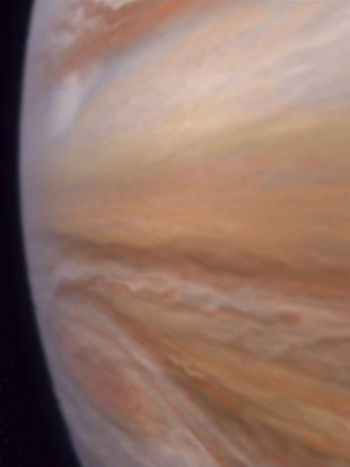
Jupiter (ENT-50)
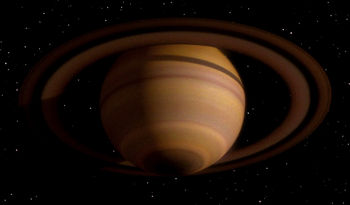
Saturn (TNG-101-102)
Gas giant. Age ranges from 2-10 billion years. Diameter is 50,000 to 140,000 km. Typically located in the Cold Zone of a planetary system. Surface radiates some heat and is tenuous and comprised of gaseous hydrogen and hydrogen compounds, atmospheric zones vary in temperature, pressure and composition. May contain hydrocarbon-based life forms.[1]
References
- 1. Star Trek Star Charts. Book. Pocket Books. October 2002.
Planet, Class-I
Gas Supergiant. Age ranged from 2-10 billion years. Diameter was 140,000 to 10 million km. Typically located in the Cold Zone of a planetary system. Surface radiated heat and was tenuous and comprised of gaseous hydrogen and hydrogen compounds, atmospheric zones varied in temperature, pressure and composition, and water vapor may have been present. No known native life forms.[1]
Class-I Planets:
References
Planet, Class-H

Rigel XII (TOS-03)
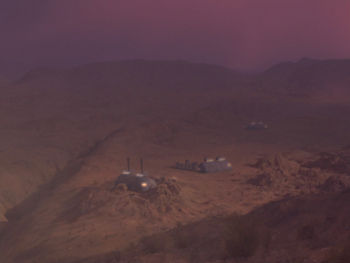
Rigel XII Surface (TOS-03)
Desert. Age ranged from 4-10 billion years. Diameter was 8000 to 15,000 km. Typically located in the Hot Zone, Ecosphere or Cold Zone of a planetary system. Surface was hot and arid, with little or no surface water, atmosphere may contain heavy gases and metal vapors. May contain drought- and radiation-resistant plants and animal life.[1]
Class-H Planets:
References
Planet, Class-G
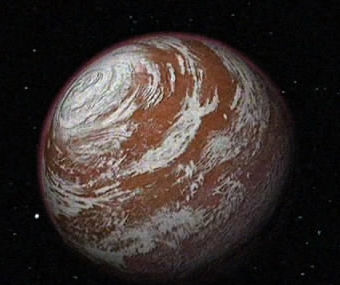
Delta Vega (TOS-01)
Geocrystalline. Age ranged from 3-4 billion years. Diameter was 10,000 to 15,000 km. Typically located in the Ecosphere of a planetary system. Surface was still crystallizing, atmosphere contained carbon dioxide, some toxic gases. Eventually cools to become Class K, L, M, or N. May contain some primitive single-celled organisms.[1]
Class-G Planets
References
- 1. Star Trek: Star Charts. Book. 2002. Pocket Books.
Planet, Class-F
Geometallic. Age ranged from 1-3 billion years. Diameter was 10,000 to 15,000 km. Typically located in the Ecosphere of a planetary system. Surface was prone to volcanic eruptions due to a molten core, atmosphere was primarily hydrogen compounds. Eventually cools to become Class G. May contain silicon-based life forms.[1]
Class-F Planets:
References
Planet, Class-E
Geoplastic. Age ranged from 0-2 billion years. Diameter was 10,000 to 15,000 km. Typically located in the Ecosphere of a planetary system. Surface was molten with high temperatures, atmosphere was hydrogen compounds and reactive gases. Eventually cools to become Class F. May contain carbon-cycle life forms.[1]
Class-E Planets:
References
Planet, Class-D (VOY-109)
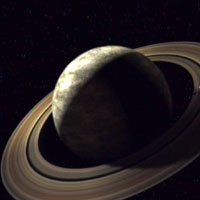
Class-D Planet (VOY-109)
In the Delta Quadrant, a massive Class-D planet was circled by many rings of Class-M asteroids, where the 247th element may have been discovered by the U.S.S. Voyager NCC-74656 crew in 2371. Over 200,000 Vhnori corpses rest as the “Next Emanation” among the asteroids.[1]
References
Planet, Class-D

Class-D Planet (VOY-109)
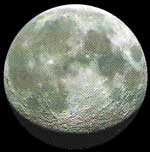
Moon (STSC)
Asteroid/Moon. Age ranged from 2-10 billion years. Diameter was 100 to 1000 km. Typically located in the Hot Zone, Ecosphere or Cold Zone of a planetary system, primarily in orbit of larger planets or in asteroid belts. Surface was barren and cratered, atmosphere was nonexistent or extremely tenuous. No native life forms.[1]
Class-D Planets:
References
Planet, Class-C
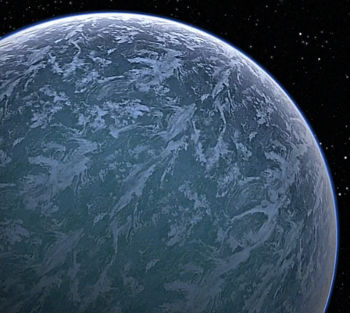
Psi-2000 (TOS-06)
Geoinactive. Age ranged from 2-10 billion years. Diameter was 1000 to 10,000 km. Typically located in the Ecosphere or Cold Zone of a planetary system. Surface was low temperature, atmosphere was frozen. No native life forms.[1]
Class-C Planets:
References
Planet, Class-B
Geomorteus. Age ranged from 0-10 billion years. Diameter was 1000 to 10,000 km. Typically located in the Hot Zone of a planetary system. Surface was partially molten and had a high temperature, atmosphere was extremely tenuous, with few chemically active gases. No native life forms.[1]
Class-B Planets:
References
Categories
- Animated Series (60)
- Articles (28)
- Books (447)
- Cast & Crew (79)
- Comics (22)
- DS9 (328)
- Early Voyages (125)
- Education (5)
- Enterprise (373)
- Excelsior (36)
- Food (19)
- Games (223)
- Klingon (70)
- Library (1,543)
- Logs (593)
- Lost Era (55)
- Medicine (18)
- Merrimac (1)
- Mirror (35)
- Miscellaneous (13)
- New Frontier (54)
- Next Generation (635)
- Original Series (681)
- Personnel (436)
- Places (369)
- Politics (12)
- Recreation (10)
- SCE (41)
- Science (1)
- Shatnerverse (9)
- Ships (455)
- Site Updates (98)
- Starfleet Academy (86)
- Stargazer (42)
- STO (61)
- Technology (45)
- Titan (59)
- To Boldly Go (1)
- TV/Film (214)
- Uncategorized (4)
- Vanguard (76)
- Voyager (236)
- Weapons (27)
- Xenology (54)